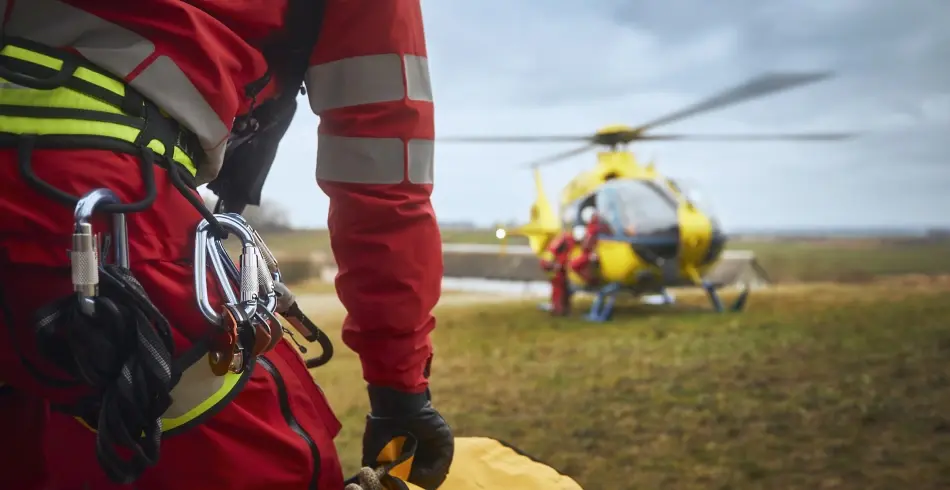Humanitarian Supply Chains

When large-scale disasters strike—whether due to natural forces, man-made disasters or armed conflicts—a swift movement of resources can mean the difference between life and death.
At its core, the humanitarian supply chain functions like any other logistics network—requiring warehousing, transportation, and inventory management. However, its dynamics are uniquely challenging, governed by urgency, unpredictability, conflict-related access restrictions and the need to operate in chaotic environments. Unlike commercial logistics, where efficiency drives decisions, humanitarian logistics prioritises timely delivery and equitable distribution to affected areas, often navigating damaged infrastructure, insecure zones, compliances, and limited resources.
Challenges of Humanitarian Supply Chains
While the core goal of humanitarian supply chains remains delivering the right resources to the right place at the right time, the volatile nature of disaster environments creates unique hurdles for them which sets it apart from the traditional supply chain and logistics. These challenges further make their operations uniquely complex, especially in a country like India, where diversity in geography, infrastructure, and socio-economic conditions add layers of complexity.
Deficient infrastructure: Disasters—whether natural, like the 2004 Indian Ocean tsunami, or man-made, like the Bhopal Gas Tragedy—demand an immediate and coordinated response. However, a common challenge that disrupts the smooth flow of aid is unusable infrastructure in disaster-hit areas. In the aftermath of the 2013 Uttarakhand floods, washed-out roads and damaged bridges severely hampered relief efforts. Essential supplies were delayed, and rescue operations were forced to rely on helicopters, which could only transport limited amounts of aid at a time. Similarly, during the COVID-19 pandemic, the lack of functional oxygen plants in rural areas highlighted the challenges of delivering critical medical supplies in the absence of robust infrastructure.
Unpredictability: The unpredictable nature of humanitarian crises further complicates logistics. Unlike commercial supply chains, where demand can be forecasted and inventory can be planned accordingly, disasters generate sudden, large-scale requirements for specific resources. For instance, during the second wave of COVID-19 in India, the need for oxygen concentrators and ventilators spiked overnight. This demand surge caught supply chains off guard, leading to delays and a shortage of critical equipment in hospitals.
Lack of unified coordination: Liaison among multiple stakeholders is another persistent challenge. Relief efforts in India often involve government agencies, NGOs, private companies, and local communities. During the Kerala floods of 2018, while many organisations mobilised resources quickly, a lack of unified coordination resulted in duplication of efforts in some areas and neglect in others. Misaligned priorities between different groups often slow down aid distribution and create inefficiencies.
Resource constraints: Humanitarian organisations frequently operate with limited funding and manpower, forcing them to make tough decisions about resource allocation. The response to Cyclone Fani in Odisha in 2019 was a testament to how pre-positioning of resources and advanced planning helped mitigate some of these constraints. But not all crises allow for such preparedness.
Mismanagement of supplies: During the 2020 Bihar floods, well-meaning contributors sent items like packaged food and clothing in large quantities. However, the lack of a systematic needs assessment meant that some essential items, like water purification tablets, were overlooked, while warehouses became clogged with non-priority goods. This highlights the importance of targeted aid and informed planning.
Safety of humanitarian workers: In regions like Ladakh or the Northeast, where terrain is treacherous and access is limited or in regions affected by political strife and war, relief workers often risk their lives to deliver aid. This challenge is compounded by the lack of specialised training for many volunteers and personnel who are thrust into these high-stress environments. In volatile environments, compliance isn’t just regulatory—it’s essential to operational legitimacy. Warehouses must follow national laws, international humanitarian principles, and strict material handling protocols, especially for sensitive goods like medicine or dual-use items (e.g., communication equipment). Aid organisations must maintain transparency and documentation for cross-border shipments, lest relief efforts be delayed or denied at checkpoints.
Delays in delivering aid: This can mean the difference between life and death. When the Indian Railways launched the Oxygen Express trains during the pandemic, their speed and efficiency played a critical role in saving lives. Such innovations underscore the importance of swift action, but they also expose the costs and challenges involved in prioritising speed over cost efficiency.

Role of Warehouses in Humanitarian Supply Chains
Warehouses serve as the logistical backbone that ensures essential supplies are delivered swiftly during crises. In India, where disasters like floods, cyclones, and pandemics are recurrent, the role of strategically located and efficiently managed warehouses becomes even more critical. These facilities are not just storage spaces; they are hubs of planning and coordination, enabling relief organisations to act with precision and speed. Pre-positioned warehouses, stocked with food, medical supplies, and clean water, can rapidly deploy resources to disaster-hit areas, minimising delays that could cost lives. For instance, in flood-prone states like Bihar and Assam, warehouses stocked with water purification tablets, emergency shelters, and hygiene kits have enabled quick responses to annual monsoon-induced floods. The COVID-19 pandemic saw similar efforts, where warehouses managed the distribution of oxygen concentrators, vaccines, and PPE kits.
In war-prone areas, warehouses must also be designed for security resilience—including reinforced structures, controlled access, back-up energy systems, and coordination with local authorities or peacekeeping forces. Contingency planning must account for relocation, remote dispatching, and emergency shut-down protocols.
There are four typical phases in humanitarian aid inventory management and warehouses play a crucial role in all of them:
- The Preparedness Phase involves stockpiling essential items in disaster-prone areas. Such as keeping emergency kits containing first aid, food, and shelter materials ready in areas that prone to cyclones.
- In the Response Phase, when disasters strike, pre-stocked warehouses ensure immediate deployment. Such as relief supplies from warehouses being quickly dispatched to isolated communities during a flood outbreak using innovative solutions like boats and drones.
- During the Distribution Phase, inventory management focuses on monitoring consumption and ensuring equitable distribution. In situations where displaced populations return home, priorities shift from emergency relief to recovery items like construction materials.
- Lastly, in the Recovery Phase, surplus inventory can be redirected to rebuild communities. After the 2001 Gujarat earthquake, for instance, leftover relief materials were utilised for long-term recovery efforts, such as school reconstruction.
Thus, efficient warehousing mitigates issues like stockouts and wastage. Real-time tracking systems, which are being increasingly adopted in India, ensure resources are optimally allocated and items like medicines are used before expiration. Technologies such as Geographic Information Systems (GIS) assist in mapping disaster-prone zones to proactively establish strategically located warehouses.
Finally, it goes without saying that private players have a role to play too. Private entities often complement government and NGO efforts. For example, Indian conglomerates consistently step up to provide logistical support during disasters, leveraging their extensive supply chain expertise, warehousing expertise, and ability to scale quickly. Their contributions, from providing transport fleets to opening up storage facilities, often bridge critical gaps in humanitarian logistics.
As the landscape of disasters expands to include conflict-driven crises—such as border tensions, internal displacement, or war-like emergencies—the agility, resources, and innovation of private players become even more crucial. Their capacity to mobilise rapidly, ensure compliance across jurisdictions, and maintain continuity in volatile environments makes them indispensable partners in building a resilient humanitarian ecosystem. In India, a country with diverse and recurring challenges, strategically located and efficiently managed warehouses remain a cornerstone of disaster resilience, and their collaboration is not just valuable—it is essential in saving lives and rebuilding futures.